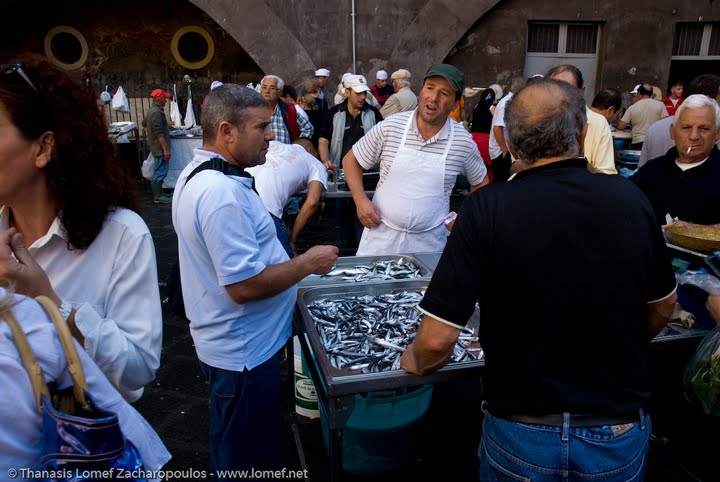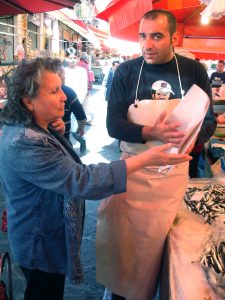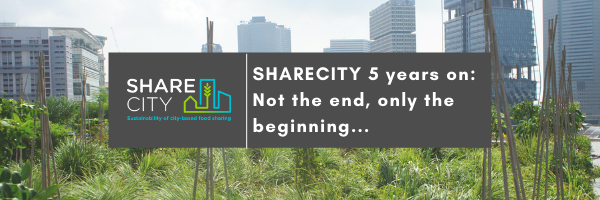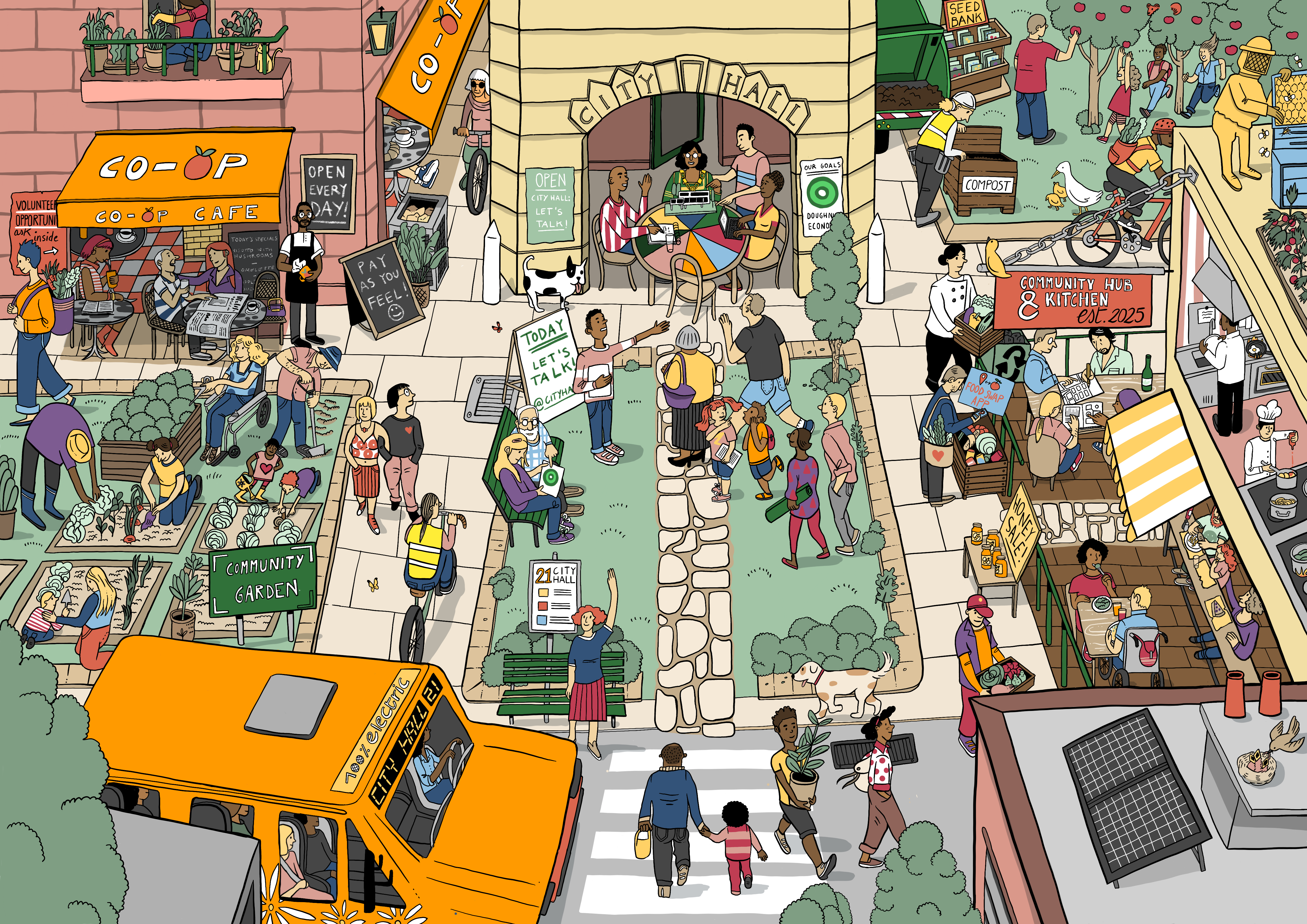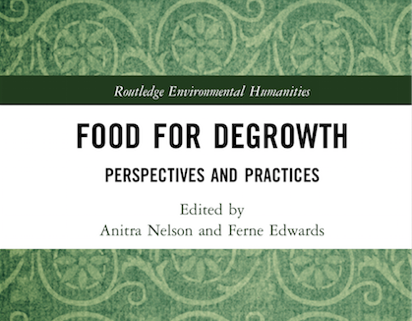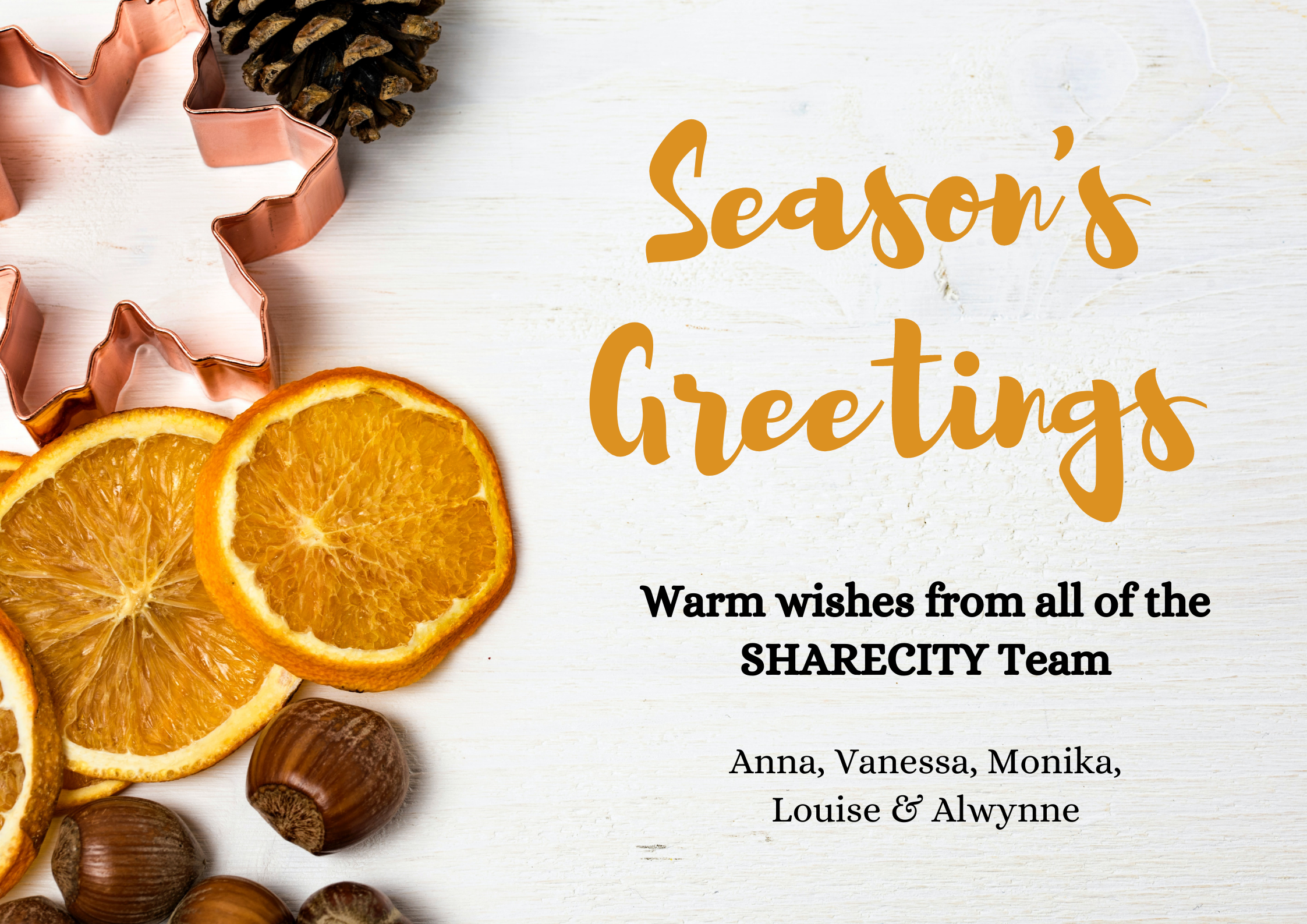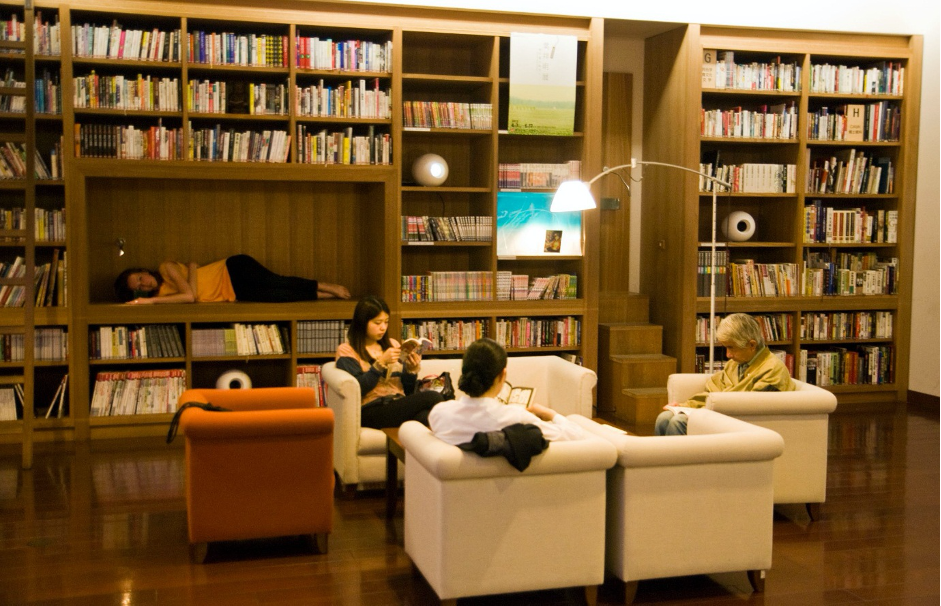Trust/Mistrust from a traditional fish market to contemporary food sharing practices
Published by Brigida Marovelli on the 20th September 2016.
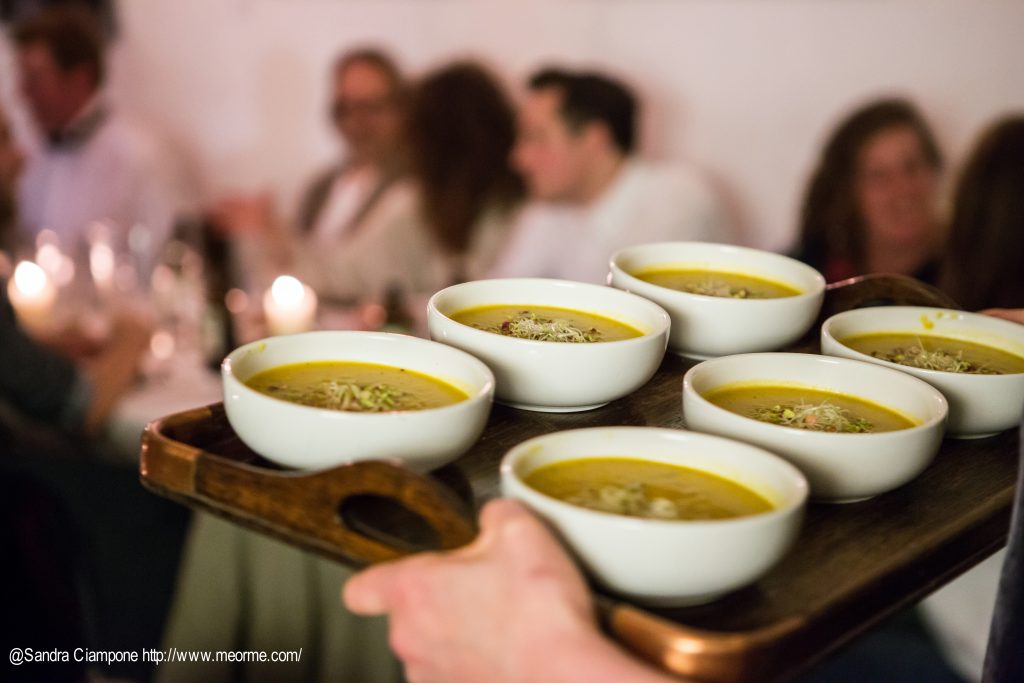
At SHARECITY we are examining the practice and sustainability potential of city-based food sharing economies. It has already been established that sharing economies, food sharing economies in particular, require relations of trust between those who share for activities to be sustained, but there is little explicit attention to matters of trust and food sharing to date. In this blog post I draw on my experience of how trust can be built between buyer and vendor at a traditional food market and I will then compare it to online meal sharing platforms, such as EatWith or MealSharing, to sketch out differences and similarities in relations of trust between these environments.
In July 2016 I had the pleasure to present a paper at the 14th European Association of Social Anthropologists (EASA) 2016 biennial conference in Milan. Their annual theme was ‘Anthropological legacies and human futures‘ and it was the largest EASA so far with over 1550 delegates. I participated in the panel “Anthropology of Mistrust”. The panel convenors, Christian Giordano and Florian Mühlfried, challenged presenters to explore the complex relationship between trust and mistrust.
Drawing on ethnographic material from my doctoral fieldwork in the traditional fish market, La Pescheria, Catania (2008-2011), my paper demonstrated that trust/mistrust are performed in culturally appropriate ways and helped buyers and vendors to establish relationships within the fish market. By analysing the common patterns that emerged in conversations between stallholders and customers, I see the movement within the market’s interactions as a counterpoint, in which vendor and buyer create a harmonic ensemble, even if playing along different melodic lines. It is a dance between trust and mistrust, familiarity and unfamiliarity, distance and proximity, doubt and certainty, inside and outside.
Let’s a have a closer look to how it works. When approaching the stall, the first contact with a market’ stall is a sensory one. Customers assess the quality of goods by looking, smelling, touching and eventually even tasting. They first trust their senses, but what they see is not enough to justify the choice of buying at a given stall.
Market goers would, in fact, initiate the interaction with the vendor by breaking the ice through small talk, such as a quick remark about what had happened in the city or in Italy in the last few days, or about the weather. This act functioned as a reinforcement of the temporal continuity in the relationship with the vendor, establishing that their presence at the market is a regular one. Customers would then move immediately on by reviewing the previous purchase. They would comment on something bought at the market, most likely complaining about one or more aspects of the previous transaction, and certainly they would not be totally happy about it. Customers go back to the stall to report on the quality of the fish, how they cooked it, and the goodness or badness of the final result. This is to say, “I come back, I check on you and I can spread the word that you sold me crap. This can harm your reputation!” This is an effective way to pinpoint that their relationship has a past and a future and that the vendor’s reputation will be affected by how he will perform.
After setting the pace and the tone of the dialogue, the buyer carries on, proving his or her expertise and needs to question the goods’ quality. During my fieldwork it frequently heard buyers approaching the stall-holders with remarks such as “Is it fresh? Are you sure? Tell me the truth! Was it frozen? Oh come on, I’m here every day and you still try to screw me?”
Doubting is not only allowed, but also appropriate. The regular customer confirms trust through daily shopping, but performs mistrust through questioning. The verbal interaction with the vendors keeps them alert, you can choose any other stall of the market at any given time. While the customer has power to change stalls, the vendor can give poor quality fish or try to cheat on the price. For the vendors, the customer’s trust is at stake, so they have to perform this game in the best possible way so as not to lose the customer.
To summarise, once at the stall the customer has to perform distrust, questioning the quality, the price and the whole fairness of the transaction. This is not offensive, it confirms the vendor’s identity as a good seller. The good seller tries to make a profit at the expense of the customer, but the expert buyer is able to express their fear of being cheated. Both social actors have to be alert: the customers not to be cheated and the vendor to get the best price for their goods. The crescendo of this tension between buyer and seller is not perceived as unpleasant; on the contrary it is a peculiar characteristic of the market that is not replicated at the supermarket.
Both customers and vendors have to demonstrate to be smart, to be the ones who are able to perform mistrust without being disrespectful and gather the information they need to purchase or sell the right goods. I would like to emphasize that the market’s daily practices are characterised by actively taking part in this game. Vendors and buyers exercise their agency by searching, negotiating and mistrusting/trusting. It is also important to underline that once customers trust the vendor and are recognised as regular, they cannot relax nor assume that the vendor will not try to cheat them. Stall-holders will treat regular customers in a very special way, by greeting them, shaking hands, and by kissing but when it comes to the transaction, one has to show alertness, because the rules of the game stay the same. Trust is often seen as frozen in time, following a pattern according to which once trust is gained from someone, one will have it forever. My data shows quite the opposite, it is fragile, potentially fleeting and contingent. In this context the fluctuation between trust and mistrust is re-enacted at every transaction and it has to be continually forged.
In his classical anthropological contribution about the Moroccan market, Geertz (1979:225) shows clearly how the bargaining process is “a communications channel evolved to serve the needs of men coupled and opposed at the same time”. Both customers and sellers try to obtain an advantage from the transaction. They are together in the transaction, because they need each other, but they are also one against the other, a sort of complementary relationship.
A food market is probably the most traditional and classical context in which to observe economic transactions. The interaction within this traditional market occurs daily and predominantly face to face. Except for a few cases, in which regular customers place orders by telephone and request a home delivery, the majority of the relationships between traders and buyers are based on proximity and familiarity. In ICT-enabled food sharing practices the interactions are mainly initiated online. So what does a traditional market has to teach about exchange in the digital age? Can it help us understand the mechanisms through which trust is, or could be built in contemporary food sharing practices?
Mealsharing.com and Eatwith.com are two online platforms for social dining, in which users can choose to share a home cooked meal in someone’s place. There is a wide range of motivations for approaching these platforms, from the desire to try something new, to being involved in new experience of eating or out of curiosity for this fashionable and experimental way of sharing a meal with strangers. However the person does not know the chef and has no previous experience of his/her cooking and I am interested in isolating the moment of the online transaction, in which a user takes the decision to trust a profile and book a particular meal from a selection of option.
This process clearly does not share the materiality of the fish market and the visceral experience of being physically present. The bodily engagement with food is probably the most important aspect of a food market, as evidenced by countless supermarket strategies to reproduce the look and feel of an open-air food market. Nevertheless it would be a mistake to dismiss the online process as a non-sensory one. While market customers are allowed to sensorially and directly experience the goods (Marovelli 2014), in the case of online food sharing practices, the sensory engagement is totally visual: users engage with a narrative and with a visual representation, i.e. with the way chefs have chosen to represent themselves. Hosts choose pictures very carefully and describe thoroughly their food and their passion for cooking.
Following trust scholars, I argue that mistrust and trust can be seen as a continuum and as a temporal process, in which “the decision to trust another person is made in the present and is affected by the partner’s reputation, which represents the past, and by the expectation of possible tangible and/or non-material rewards, which represents the future.” (Khodyakov 2007:126). This holds true for both the market and the online platform, which share two main elements: the reviewing process and the construction of reputation. While at the market the reviewing process occurs orally at the beginning of each transaction, it is more formalised and crystallised in the online written reviews. Online users evaluate the service and are aware of being part of an online community of users, who might base their decision on their review. As far as the reputation is concerned, once again at the market it is spread by word of mouth and it is much more flexible and variable. The way a chef performs during a pop-up event will affect his reputation in the future, which will be bound to users’ online reviews.

Once the choice is made, the materiality of the interactions constitutes the main difference between a traditional market and an online transaction, the physicality of the exchange with the immediate handling of goods and money are replaced by an online system in an indirect way, which users need to trust. Furthermore, ICT mediates and establishes the rules of the transactions by for example eliminating negotiations between vendor and buyer. The material relationship is postponed and arranged for a given time and space in the future, when the customer will show up at the chef’s door and the actual meal will be shared.
While trust/mistrust may be performed differently between material and online relationships, a detailed ethnographic approach can be useful in both cases to highlight the different stages of a transaction and to analyse contemporary online platforms, which try to standardise interactions between people and food. Trust/ mistrust remains and perhaps becomes an even more crucial element to consider in contemporary food sharing practices.
Geertz, C. (1979). SUQ, Bazaar economy in Sefrou. In C. Geertz, H. Geertz, & L. Rosen (Eds.), Meaning and Order in Moroccan society: three essays of cultural analysis (pp. pp.123–311). Cambridge: Cambridge University Press.
Khodyakov, D. (2007). Trust as a Process: A Three-Dimensional Approach. Sociology, 41(1), 115–132.
Marovelli, B. (2014). “Meat Smells Like Corpses” : Sensory Perceptions in a Sicilian Urban Marketplace. Urbanities, 4(2), 21–38. Retrieved from http://www.anthrojournal-urbanities.com/docs/tableofcontents_7/4 – Marovelli Art Fin.pdf
© 2015 - 2024 ShareCity | Web Design Agency Webbiz.ie
